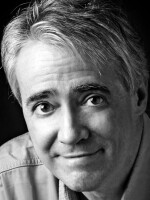SCOTT SIMON, HOST:
Light pollution is usually thought of as cities blanketed in a haze of city lights that blot out starry skies. But there's another type of light pollution that's edging into our skies - satellites, some brighter than most stars. Scientists who study stars and other celestial objects are concerned, especially as the pace of these satellite launches increases. Just this week, one of the dozens of commercial companies launching satellites sent five of them into space. Grant Tremblay is senior vice president of the American Astronomical Society, and he joins us from Newton, Mass. Thanks so much for being with us.
GRANT TREMBLAY: It's a pleasure to be with you, Scott.
SIMON: Forgive me - what makes a satellite bright? I guess I wasn't aware of this.
TREMBLAY: Yeah, sure thing. Satellites are inadvertently big mirrors in the sky. They're made of metal. Some have very reflective solar panels, and they bounce the light of the sun back toward Earth. And so that's why we see satellites really, really bright in the night sky. They're reflecting the sun back toward Earth, even at night.
SIMON: Wow. And this makes it harder to look into the skies.
TREMBLAY: If you go out tonight and look up and just wait a minute, you will see a satellite transiting your field of view. You'll actually probably see quite a few. What you don't know is that there are many above you at any given time. There are about 35,000 objects on orbit right now. About 9,100 or so of those are active payloads, meaning actively operating satellites right now. And the other 26,000 or so are pieces of debris that are anywhere from larger than 10 centimeters in size up to the size of a school bus. These are expent (ph) second-stage rockets at many altitudes above the Earth.
SIMON: Has this always been a problem, or has this increased with the proliferation of satellites in our - in orbit?
TREMBLAY: So the Space Age is young, Scott, as you know. Sputnik began the Space Age 67 years ago. So the Space Age is younger than my dad, right? But it has really, really exploded in recent years. It's gone exponential. In fact, 81% of all active satellites were launched in just the last four years.
SIMON: Is there anything to do about it? I mean, I don't foresee anybody volunteering to launch fewer satellites.
TREMBLAY: I want to be clear. So I'm coming to you from the American Astronomical Society. And all of us at the AAS, we're a bunch of optimists. We are fully cognizant of the immense societal benefits that can be gleaned from growing infrastructure in low Earth orbit, right? But this comes at a grave cost, and one of those costs is the loss of the night sky.
So as you know, you can barely see the stars from most cities nowadays. I grew up in the late '80s and '90s, and I was in Maine. And the skies, Scott, were so bright. They looked like frosted cathedrals. The Milky Way, the disk of our galaxy, when it was up in the winter - I swear to you, Scott, it was so bright that it cast a shadow on the ground.
And when we lose that, when we lose the ability to see the stars, we lose something not only scientific - you know, our ability to see spectra and better understand black holes and galaxy evolution - we lose that thing that connects us all to a cosmos that is so many orders of magnitude vaster than we are that it's impossible to describe.
SIMON: This isn't just a matter of making starry skies beautiful again, is it?
TREMBLAY: Yeah. So right now, there are more than 547,000 applications to the ITU, the International Telecommunications Union, and the FCC for future satellites that would be put on orbit. What is clear is that while we're at about 10,000 active satellites right now, that number is going to exponentially increase, right? But what is also true is that we are almost certainly already infected with something that is called the Kessler syndrome.
Imagine, for example, two satellites collide. So instead of having two satellites, you now turn those into thousands of pieces of debris flying in all different directions at 18,000 miles an hour in some cases. So those are bullets, right? So then one of those bullets then impacts another satellite, and that creates another few thousand pieces of debris, another few thousand bullets. This is called the Kessler syndrome.
It is a looming catastrophe that we absolutely might witness in our lifetimes. And it will be a Class 5 societal catastrophe for a global civilization that has been building in the last several decades a load-bearing pillar of our civilization in orbit. I don't know what happens if we lose the global internet. Planes can't fly. GPS doesn't work. Whole sectors of the global economy just collapse within minutes.
SIMON: But as you note, is there anything to be done?
TREMBLAY: We have world-leading folks working on this, including trying to influence future regulatory framework. It's hard to regulate space - right? - because no one country owns low Earth orbit, nor should it, frankly. But you've got to get a lot of international partners together to work together to save the night sky.
SIMON: Grant Tremblay is senior vice president of the American Astronomical Society. Thanks so much for speaking with us.
TREMBLAY: It's an honor, Scott. Transcript provided by NPR, Copyright NPR.
NPR transcripts are created on a rush deadline by an NPR contractor. This text may not be in its final form and may be updated or revised in the future. Accuracy and availability may vary. The authoritative record of NPR’s programming is the audio record.



